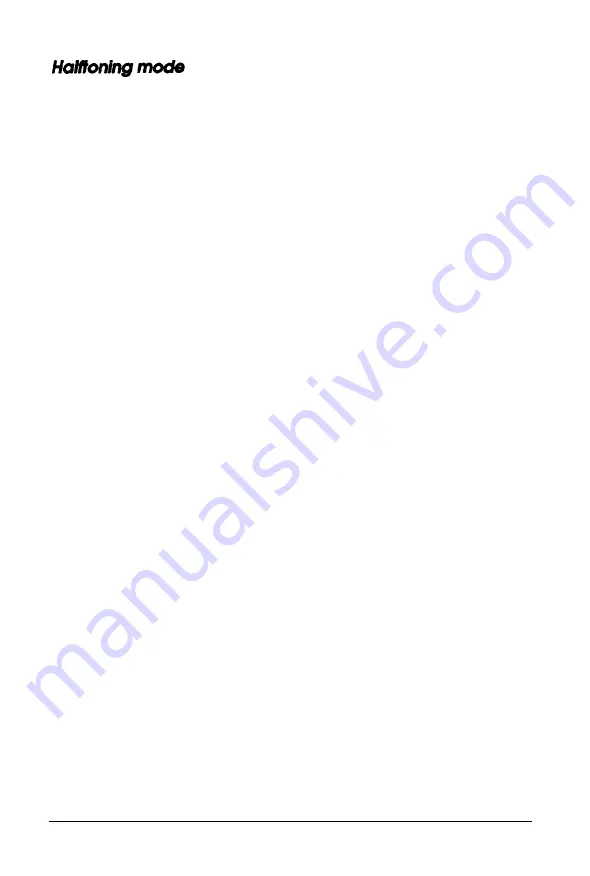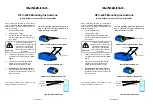
Halftoning is a process of changing an image to a pattern of
dots. This is required because a printing press produces images
in a different way than photography does.
Photographs have an almost infinite number of tones, with an
almost infinite number of colors for color photographs, but
printing uses only individual single-color dots. Black and white
images use black dots, and color images use only four colors of
dots: cyan (blue-green), magenta, yellow, and black. The size
and spacing of these dots is varied to simulate photographic
continuous tones. In some halftoning the dots are quite
noticeable, as you can see in one of the illustrations on
page 2-11 of this manual. If the dots are fine enough, however,
the printed image appears to have continuous tones, as you can
see on the cover of this manual.
You can choose various types of halftoning at the time you
scan, but it is nearly always best to choose the halftoning
setting “off” or “none” and have the halftoning done by the
image editing software or by the output device (such as a laser
printer). The illustrations on page 2-11 were scanned in gray
scale with no halftoning and printed on a black and white laser
printer. The printer performed the halftoning so that it could
print the image.
You will always get better results scanning from a photograph
than from a printed image, such as a picture in a newspaper or
magazine, because printed images have already been halftoned
and you may see a conflict in the halftone methods.
Appendix A-9
















































